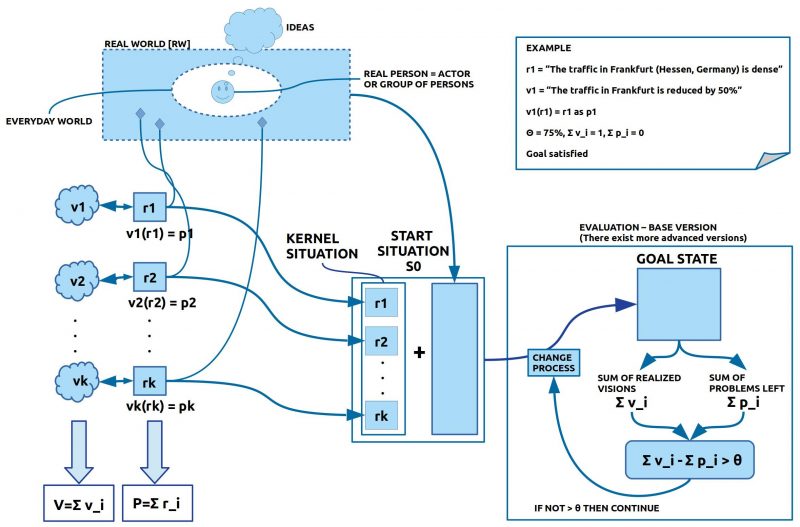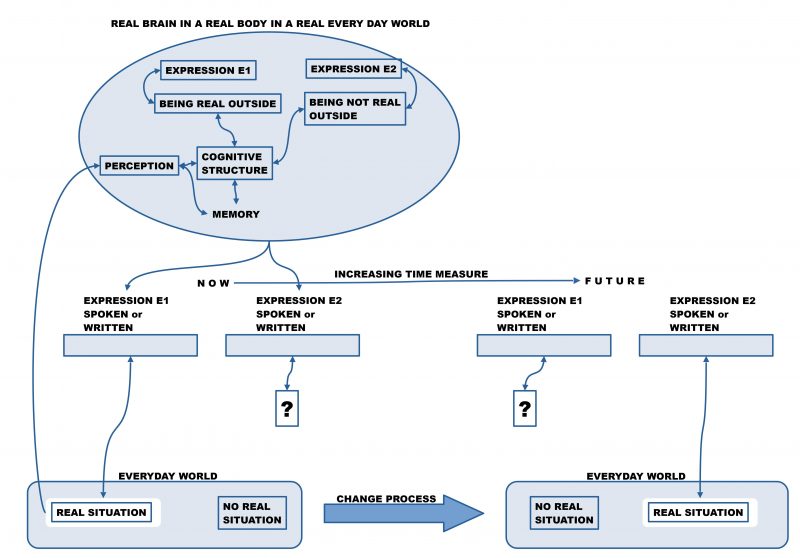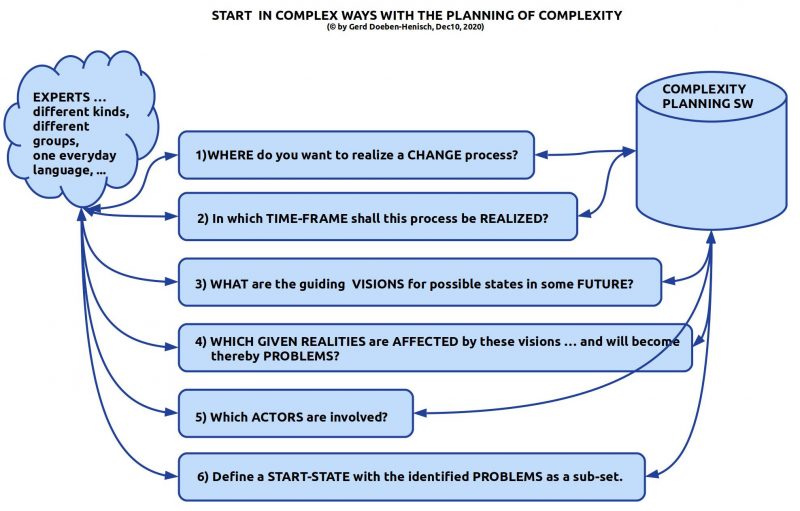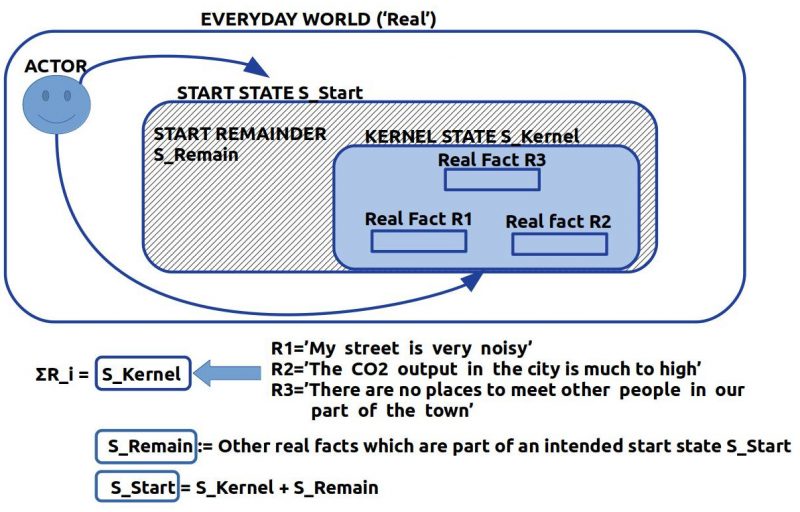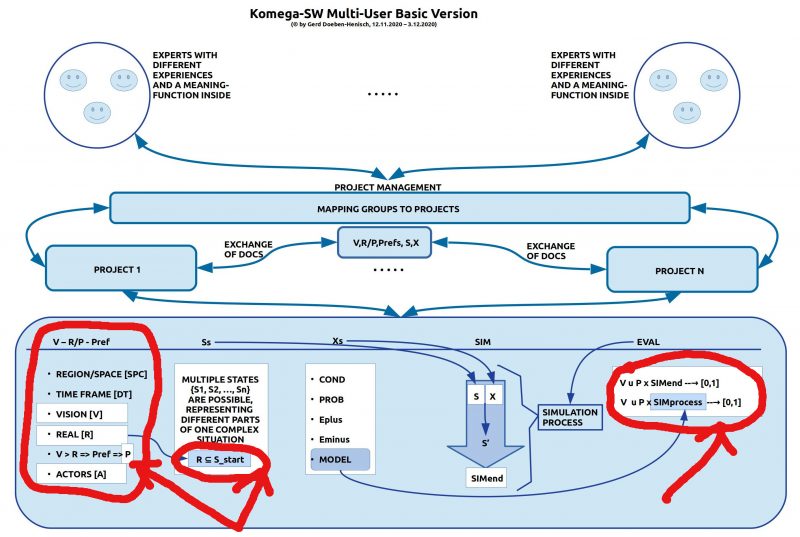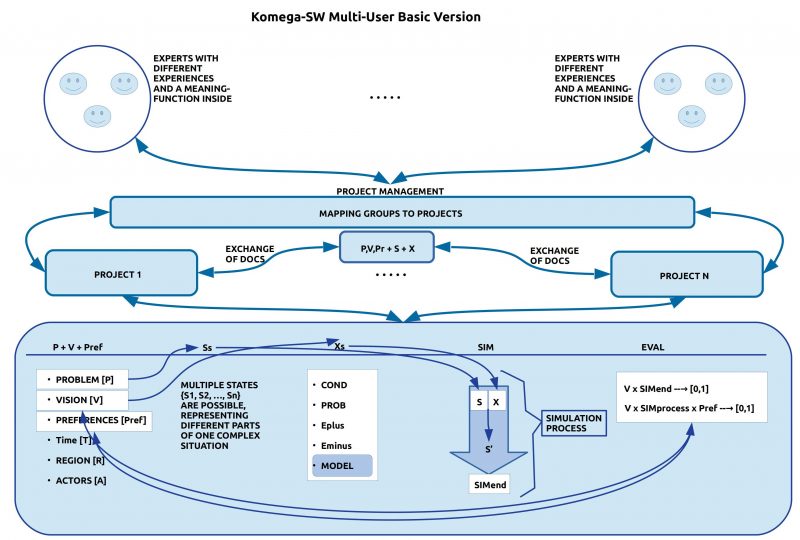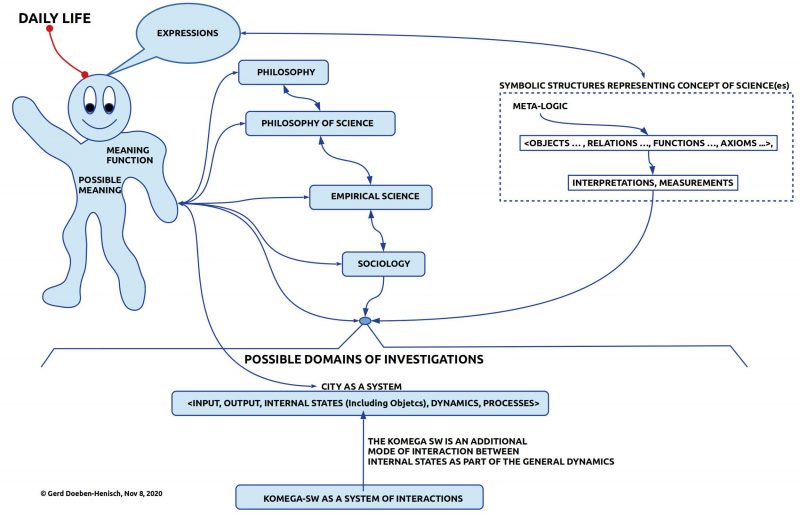eJournal: uffmm.org, ISSN 2567-6458, 1.December 2020
Email: info@uffmm.org
Author: Gerd Doeben-Henisch
Email: gerd@doeben-henisch.de
ANTHROPOLOGY AND ENGINEERING
The starting point of view in this blog has been and still is the point of engineering, especially the perspective of man-machine interface [MMI], later as Man-Machine Interaction, then accompanied by human-computer interaction [HCI] or human-machine interaction [HMI]. While MMI often is discussed in isolation, not as part of engineering, this blog emphasizes a point of view where MMI is understood as an integrated part of systems engineering. The past years have shown, that this integration makes a great difference in the overall layout as well as in the details of the used methods. This integration widened the scope of MMI to the context of engineering in a way which teared down many artificial boundaries in dealing with the subject of MMI. The analysis part of MMI can take into account not only the intended users and a limited set of tasks required for the usage of a system but it can extend the scope to the different kinds of contexts of the intended users as well as the intended service/product as such: cultural patterns, sustainable perspectives, climate relevance, political implications, and more. This triggers the question, whether there are other established scientific disciplines which are sharing this scope with MMI. Traditionally experimental and cognitive psychology has always played an important role as part of the MMI analysis. Different special disciplines like physiology or neuro-psychology, linguistics, phonetics etc. have played some role too. More recently culture and society have been brought more into the focus of MMI. What about sociology? What about anthropology? The following text discusses a possible role of anthropology in the light of the recent book Why The World Needs Anthropologists?
INTRODUCTION AND CONCLUSION
This review has the addendum ‘Part 1’ pointing to the fact, that this text does not deal with the whole book first, but only with some parts, the introduction and the conclusion.
An Introduction
The introduction of the book is asking, why does the world needs anthropologists?, and the main pattern of the introduction looks back to the old picture of anthropology, and then seeks to identify, what could/is the new paradigm which should be followed.
The roots of anthropology are located in the colonial activities of the British Empire as well as in the federal activities of the USA, which both had a strong bias to serve the political power more than to evolve a really free science. And an enduring gap between the more theoretical anthropology and an applied one is thematised although there existed always a strong inter-dependency between both.
To leave the close connection with primarily governmental interests and to see the relation between the theory and the different Applications more positive than negative anthropology is understood as challenged to rebrand its appearance in the public and in their own practice.
The most vital forces for such a rebranding seem to be rooted in more engagements in societal problems of public interests and thereby challenging the theory to widen their concept and methods.
Besides the classical methods of anthropology (cultural relativism, ethnography, comparison, and contextual understanding) anthropology has to show that it can make sense beyond pure data, deciphering ambiguity, complexity, and ambivalence, helping with diversity, investigating the interface between culture, technology, and environment.
What Is Left Out
After the introduction the main chapters of the book are left out in this text until later. The chapters in the book are giving examples to the questions, why the world needs anthropology, what have been the motivations for active anthropologists to become one, how they have applied anthropology, and which five tips they would give for practicing and theorizing.
Conclusion
In the conclusion of the book not the five questions are the guiding principle but ‘five axis that matter greatly’, and these five axis are circumscribed as (i) navigate the ethics of change; (ii) own-it in the sense, that an anthropologist should have a self-esteem for his/ her/ x profession and can co-create it with others; (iii) expand the skill-set; (iv) collaborate, co-create and study-up; (v) recommend as being advisors and consultants.
The stronger commitment with actual societal problems leads anthropology at the crossroads of many processes which require new views, new methods. To gain new knowledge and to do a new practice is not always accompanied by known ethical schemata. Doing this induces ethical questions which have not been known before in this way. While a new practice is challenging the old knowledge and induces a pressure for change, new versions of knowing can trigger new forms of practice as well. Theory and application are a dynamic pair where each part learns from the other.
The long-lasting preference of academic anthropology, thinking predominantly in the mind-setting of white-western-man, is more and more resolved by extending anthropology from academia to application, from man into the diversity of genders, from western culture into all the other cultures, from single persons to assemblies of diverse gatherings living an ongoing discourse with a growing publicity.
This widening of anthropological subjects and methods calls naturally for more interdisciplinarity, transdisciplinarity, and of a constructive attitude which looks ahead to possible futures of processes.
Close to this are expressions like collaboration and co-creation with others. In the theory dimension this is reflected by multiperspectivity and a holistic view. In societal development processes — like urban planning — there are different driving forces acting working top-down or acting working bottom-up.
Recommending solutions based on anthropological thinking ending in a yes or no, can be of help and can be necessary because real world processes can not only wait of final answers (which are often not realistic), they need again and again decisions to proceed now.
REFLECTIONS FOLLOWING THE INTRODUCTION AND THE CONCLUSION
The just referred texts making a fresh impression of a discipline in a dynamic movement.
General Knowledge Architecture
For the point of view of MMI (Man-Machine Interface, later HMI Human-Machine Interaction, in my theory extended to DAAI Distributed Actor-Actor Interaction) embedded in systems engineering with an openness for the whole context of society and culture arises the question whether such a dynamic anthropology can be of help.
To clarify this question let us have a short look to the general architecture of knowledge.
Within the everyday world philosophy can be understood as the most general point of view of knowing and thinking. Traditionally logic and mathematics can be understood as part of philosophy although today this has been changed. But there are no real reasons for this departure: logic and mathematics are not empirical sciences and they are not engineering.
Empirical science can be understood as specialized extension of philosophical thinking with identifiable characteristics which allow to differentiate to some extend different disciplines. Traditionally all the different disciplines of empirical science have a more theoretical part and a more applied part. But systematically they depend from each other. A theory is only an empirical one, if there exists a clear relationship to the everyday world, and certain aspects of the everyday world are only theoretical entities (data) if there exists a relationship to an explicit theory which gives a formal explanation.
Asking for a systematic place for engineering it is often said, that it belongs to the applied dimension of empirical science. But engineering has realized processes, buildings, machines long before there was a scientific framework for to do this, and engineering uses in its engineering processes lots of knowledge which is not part of science. On the other side, yes, engineering is using scientific knowledge as far as it is usable and it is also giving back many questions to science which are not yet solved sufficiently. Therefore it is sound to locate engineering besides science, but being part of philosophy dealing with the practical dimensions of life.
What About Anthropology?
While philosophy (with logic and mathematics) is ‘on top’ of empirical science and engineering, it is an interesting question where to place anthropology?
While empirical science as well as engineering are inheriting all what philosophy provides remains the question whether anthropology is more an empirical science or more engineering or some kind of a hybrid system with roots in empirical science as well as in engineering?
Looking back into history it could arise the impression that anthropology is more a kind of an empirical science with strong roots in academia, but doing fieldwork to feed the theories.
Looking to the new book it could support the image that anthropology should be more like engineering: identifying open problems in society and trying to transform these problems — like engineers — into satisfying solutions, at least on the level of counseling.
Because in our societies the universities have traditionally a higher esteem then the engineers — although the engineers are all trained by highly demanding university courses — it could be a bias in the thinking of anthropologist not to think of their discipline as engineering.
If one looks to the real world than everything which makes human societies livable is realized by engineers. Yes, without science many of the today solutions wouldn’t be possible, but no single scientific theory has ever enabled directly some practical stuff. And without the engineers there would not exist any of the modern machines used for measurements and experiments for science. Thus both are intimately interrelated: science inspires engineering and engineering inspires and enables science, but both are genuinely different and science and engineering play their own fundamental role.
Thus if I am reading the new book as engineer (attention: I am also a philosopher and I am trained in the Humanities too!) then I think there are more arguments to understand anthropology as engineering than as a pure empirical science. In the light of my distributed actor-actor interaction paradigm, which is a ‘spinoff’ of engineering and societal thinking it seems very ‘naturally’ to think of anthropology as a kind of social engineering.
Let us discuss both perspectives a bit more, thereby not excluding the hybrid version.
1) Anthropology as Engineering
The basic idea of engineering is to enable a change process which is completely transparent in all respects: Why, Who, Where, When, How etc. The process starts with explicit preferences turning some known reality into a problem on account of some visions which have been imagined and which have become ranked higher than the given known reality. And then the engineers try to organized an appropriate change process which will lead from the given situation to a new situation until some date in the future where the then given situation — the envisioned goal state — has become real and the situation from the beginning, which has been ranked down, has disappeared, or is at least weakened in a way that one can say, yes, it has changed.
Usually engineers are known to enable change processes which enable the production of everyday things (tools, products, machines, houses, plants, ships, airplanes, …), but to the extend that the engineering is touching the everyday life deeper and deeper (e.g. the global digital revolution absorbing more and more from the real life processes by transforming them into digital realities forcing human persons to act digitally and not any more with their bodies in the everyday world) the sharp boundary between engineering products and the societal life of human persons is vanishing. In such a context engineering is becoming social engineering even if the majority of traditional engineers this doesn’t see yet in this way. As the traditional discipline MMI Man-Machine Interface and then expanded to HMI Human-Machine Interaction and further morphed into DAAI Distributed Actor-Actor Interaction this already manifests, that the realm of human persons, yes the whole of society is already included in engineering. The border between machines and human actors is already at least fuzzy and the mixing of technical devices and human actors (as well as all other biological actors) has already gained a degree which does not allow any longer a separation.
These ideas would argue for the option to see anthropology as social engineering: thematizing all the important visions which seem to be helpful or important for a good future of modern mankind, and to help to organize change processes, which will support approaching this better future. That these visions can fail, can be wrong is part of the ever lasting battle of the homo sapiens to gain the right knowledge.
2) Anthropology as an Empirical Science
… to be continued …
3) Anthropology as a Hybrid Couple of Science and Engineering
… to be continued …

